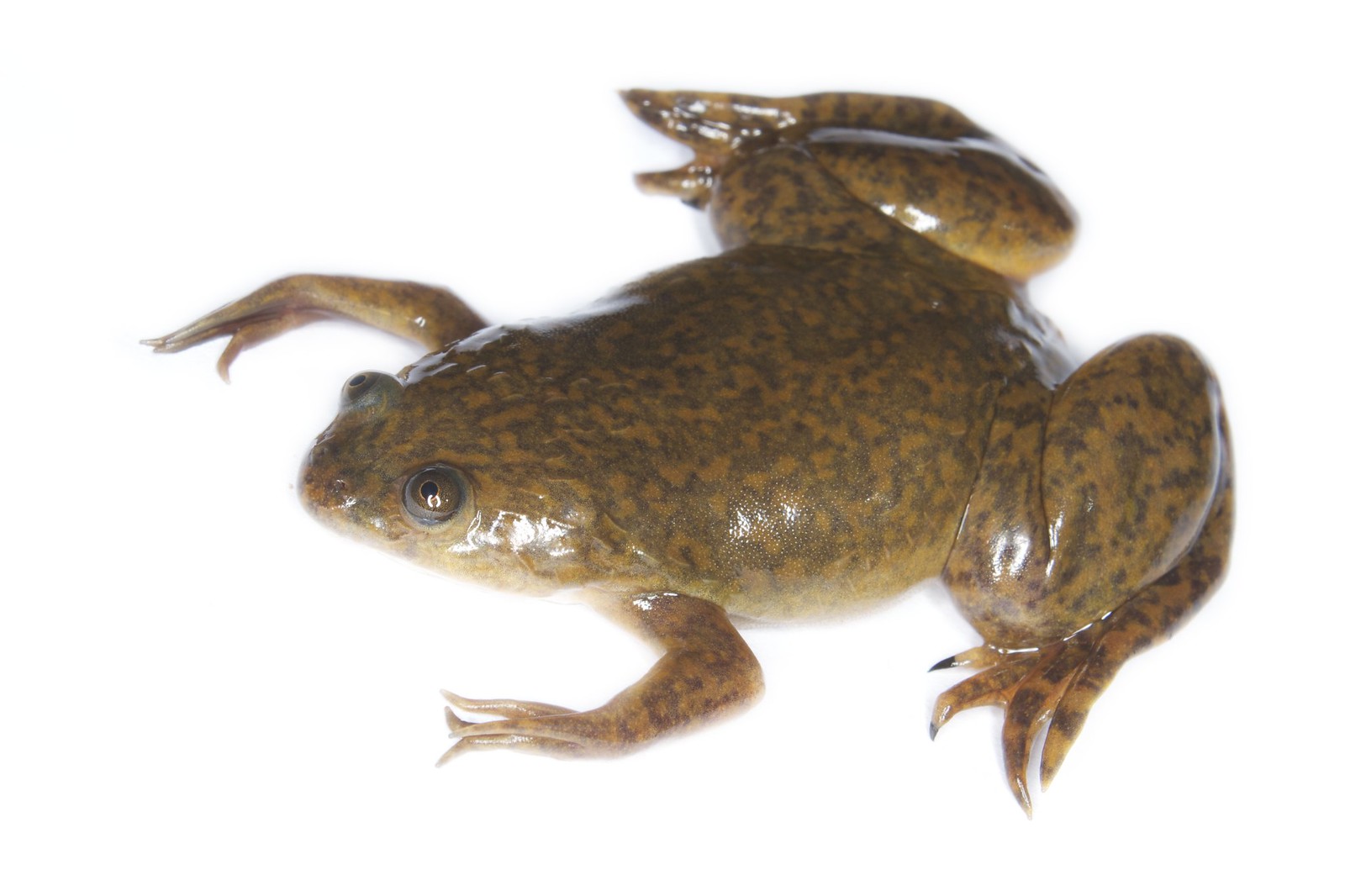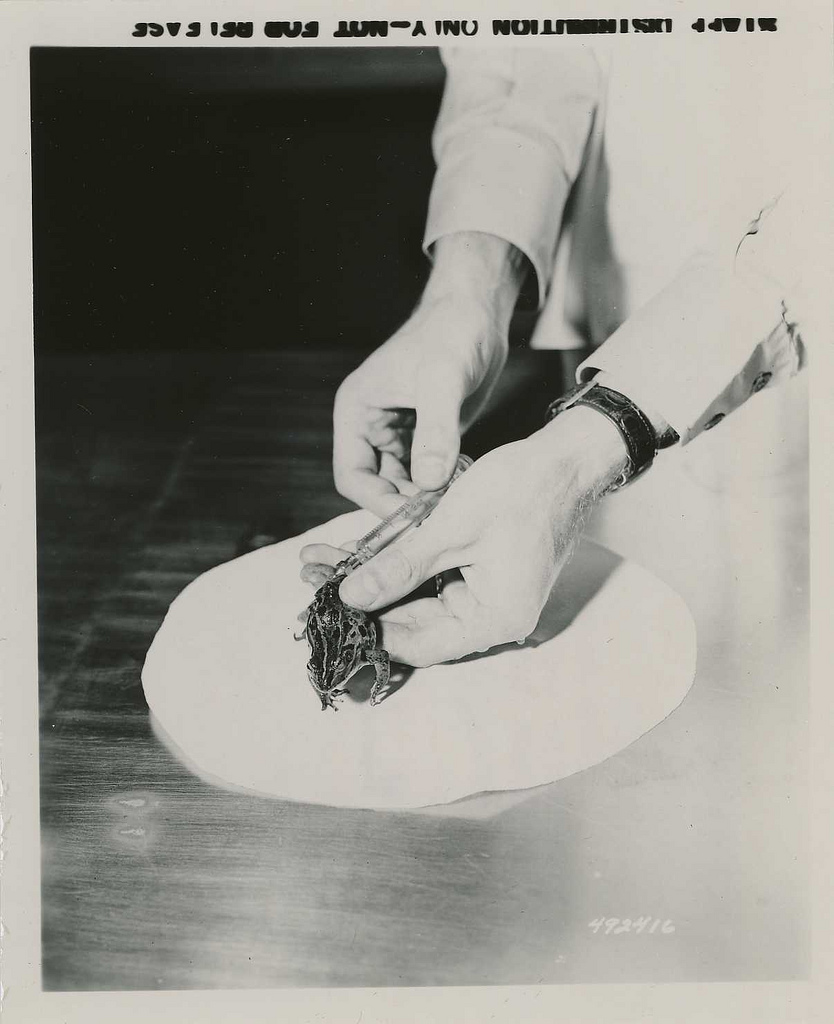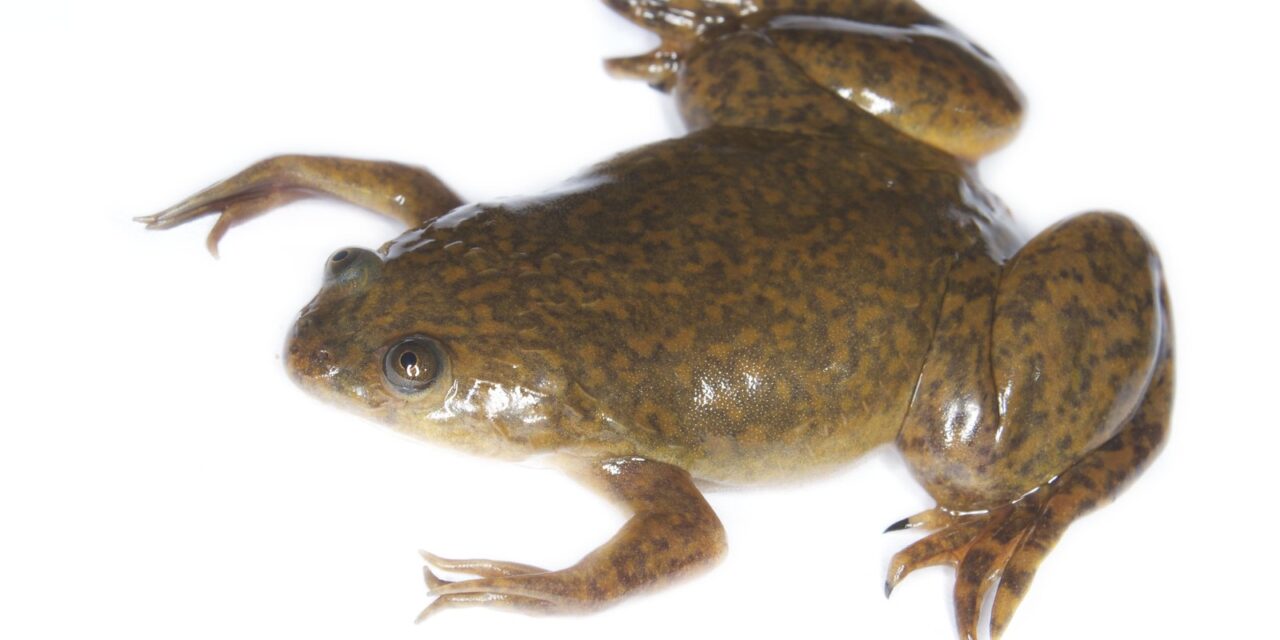What on earth do pregnancy tests have to do with frogs, you might be asking? Nowadays, it is a very straightforward task to do a home pregnancy test. Anyone can simply walk into a chemist and buy one over the counter. They are simple to use, can be done at home, and are very accurate and reliable. Before the development of modern pregnancy tests, however, the task was far less straightforward, and if a woman wanted to find out if she was pregnant, she needed to get her urine injected into a frog.
Lancelot Hogben and the African clawed frog
In the late 1920s, the British zoologist and medical statistician Lancelot Hogben began studying the chameleon properties of the African clawed frog, scientifically known as the Xenopus laevis. The frog’s adult colour followed an unusual pattern, depending on the early environment it was exposed to. Frogs raised in the dark became black, those raised in the light became light-coloured, and those raised in the wild became greenish brown. Hogben theorised that this was somehow related to the frog’s pituitary gland.
Hogben proved his theory was correct by removing the pituitary gland of the frog and demonstrating that it then became white regardless of its early environment. He went further with his testing, though and tried to counteract this effect by injecting the frogs with a pituitary extract derived from an ox and made an interesting observation. The female African clawed frogs that had been injected with this extract ovulated within a few hours.

An African clawed frog, image sourced fromWikipedia
Courtesy of Brian Gratwicke CC BY-SA 4.0
The Hogben pregnancy test
This accidental finding prompted Hogben to undertake further experiments. It was known at the time that the urine of pregnant women contained pituitary hormones. Hogben theorised that if this urine was injected into the frog, it would also cause an ovulation response. Hogben tested his theory, and a few hours later, as predicted, the frog ovulated. Moreover, the testing proved to be extraordinarily accurate. The era of the Hogben pregnancy test was upon us.
Before the development of the Hogben test, other tests existed, most notably the “A-Z test” developed by two German scientists, Selmar Aschheim and Bernhard Zondek. This test involved injecting human urine into an immature female mouse and then dissecting the mouse a few days later to see if the ovaries were larger than normal. This test was cumbersome and time-consuming, however, and was not practical for widespread use.
In contrast, the Hogben test was relatively fast and simple and far more accurate. A sample of a woman’s urine was injected into the dorsal lymph sac on the frog’s back. Results were available 12 hours later, and the test didn’t kill the animal. The frogs could live up to 30 years in captivity and could be reused. Between the 1940s and 1960s, tens of thousands of frogs were injected with human urine and used as pregnancy tests.

Injection of a urine sample into an African clawed frog, image sourced fromWikipedia
Courtesy of the National Museum of Health & Medicine CC BY-SA 2.0
The discovery was not without controversy, though. At the same time that Hogben was developing his version of the frog test, two South African scientists, Hillel Shapiro and Harry Zwarenstein, were working on their own frog test. Shapiro had been one of Hogben’s students, and he acknowledged that Hogben had come up with the idea of using the frog to perform tests involving pituitary hormones but insisted they had come up with the test first. A bitter dispute ensued that has never been truly resolved. It was Hogben’s name; however, that became synonymous with the test.
African frogs in Wales
Following the development of the test, African clawed frogs became in high demand. Initially, the frogs were imported from Africa, but before long, Hogben and another researcher, Francis Albert Eley Crew, developed a way to raise and maintain the frogs in a lab setting.
Four centres for breeding and keeping the frogs were established in the UK, one of which was in South Wales. In the 1960s, an unusual breed of frog started to be spotted in the Vale of Glamorgan. The first sighting was in 1966 in Cwm Alun, and scientists confirmed that this strange frog was the African clawed frog being used for pregnancy tests nearby. Some of the frogs had somehow escaped, and small colonies were thriving in the area.
In the early 1980s, scientists began capturing, marking, and releasing the frogs. Around 2,000 frogs were discovered over a 20-year period. In 2008, the Welsh government became fearful of transmission of a fatal fungus called chytridiomycosis that has devastated global populations of amphibians and has been linked to the export of the African clawed frog. They decided to embark on an eradication program whereby they would trap and kill breeding frogs. In 2010, an extensive number of traps were set, but oddly, not one single frog was captured. Nature, it would appear, had beaten them to it. The severe winters of 2009 and 2010 had dried out ponds and limited available food. The frogs resorted to cannibalism to survive, eating their own tadpoles and dooming the Welsh colonies.
The Welsh government are confident that the frogs have all now been completely eradicated from the area, but if you happen to be walking in the Vale of Glamorgan, keep your eyes peeled because you might see some unusual frogs hopping around.







Recent Comments